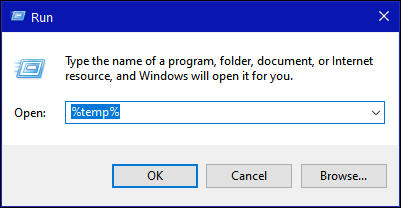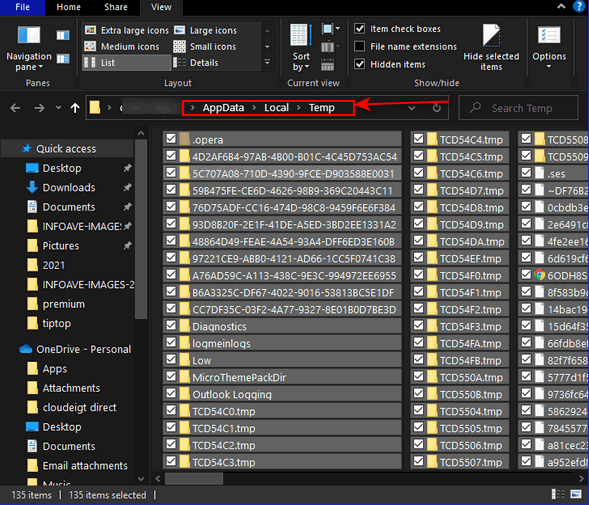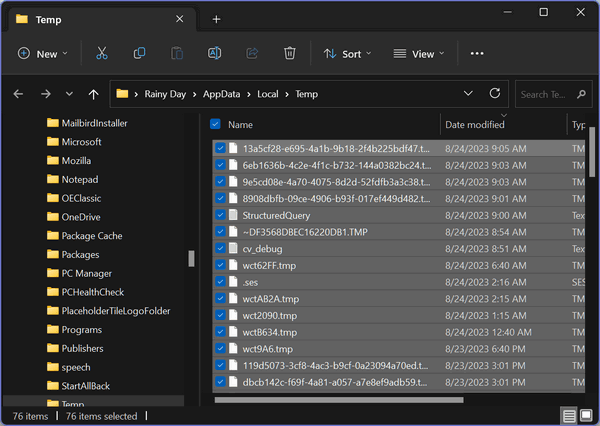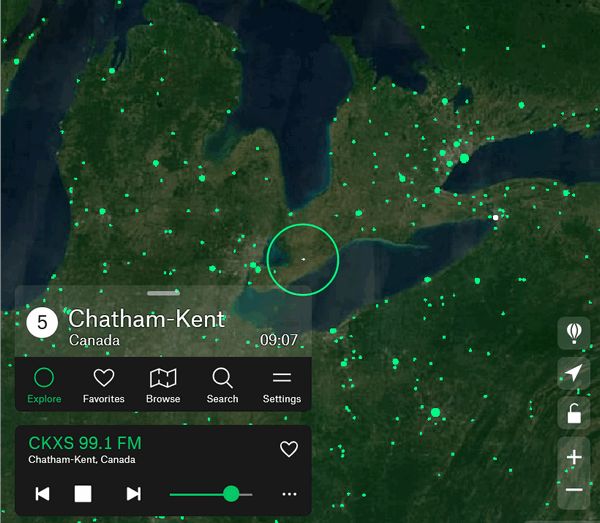
Cloudeight InfoAve Weekly
Issue #1152
Volume 23, Number 3
November 7, 2025
Dear Friends,
Welcome to Cloudeight InfoAve Weekly Issue #1152. Thank you for subscribing and for being a part of our Cloudeight family. We appreciate your friendship and support very much! Please share our newsletters and our website with your friends and family.
If you're not getting our InfoAve Daily newsletter, you're missing out on a lot of good stuff!
It's free and it only takes a few seconds to sign up. We'd love to have you with us. Visit this page to sign up for our Cloudeight InfoAve Daily Newsletter.
Help Us During
Our Fall Donation Drive When you support us with a small gift, you help us continue our
mission to keep you informed, separate the truth from the hyperbole, and
help you stay safer online. Plus, our computer tips make your computer
easier to use. Did you know that we provide support to thousands of people? Every
week, we help dozens of people via email at no charge. The questions and
answers you see in our newsletters are from the email answers and help
we provide to everyone free of charge. Thanks to your gifts, we do a lot more than provide this free
newsletter. We help you recognize online threats, fight for your online
privacy, provide you with the knowledge you need to navigate the Web
safely, provide you with suggestions for safe, free software and
websites, and help you get more out of your PC. Please help
us keep up the good fight with a small gift. Interested in helping us with a monthly gift? Visit
this page. Help us keep helping you... and helping you to
stay safe on the Web.![]()

![]()

Lynne
wants a
good ad
blocker
and a
homepage
Could
you
please
recommend
a good
ad
blocker?
Also, I
have
upgraded
to
Windows
11, but
made it
look
like
Windows
7.
How can
I get a
homepage?
Kind
regards.
Lynne
Our
answer
Hi
Lynne.
Your
homepage
depends
on your
browser.
Here's
our
tutorial
on how
to set a
homepage
in
Google
Chrome,
Microsoft
Edge,
and
Firefox.
Doug upgraded to Windows 11, and now his screen flashes
After upgrading our Windows 10 computer to Windows 11, the display is erratic. It flashes, and when you move the mouse from the background to a window, the screen goes dark. After moving the mouse around without being able to see anything, the screen will come back on. I have noticed that when moving the mouse over a hyperlink, the screen goes dark. After moving the mouse very slowly, the screen will come back on. It's almost impossible to try to change display parameters because the screen goes dark. Any thoughts?
Our answer
Hi Doug. Yours is a very common and frustrating issue after upgrading to Windows 11! Screen flashing or flickering in Windows 11 is almost always caused by an incompatible graphics driver or an incompatible application.
1. Identify the Cause (The Task Manager Test)
The easiest way to figure out if it's a driver or an app is by watching the Task Manager:
What do you think of switching from Windows 11 to Linux? I've been reading about it and thought I might try it. I always need your advice first. You are the man. Thanks for your input. Take care. Sharon.
Our answer
Hi Sharon. If you're an average Windows user, you're probably not going to be thrilled with Linux. It's not Windows. If you're techie or an advanced user, Linux makes a nice toy. There are millions of free programs for Windows, while there are only hundreds for Linux. Yeah, sure, Linux versions copy the Windows look, but it's a whole different animal from Windows. If you're not an advanced Windows user, you're not going to be very happy with Linux.
![]()
We can fix your Windows computer... check out our low prices here!
![]()
I have recently, when first starting up my daily session on my Windows 11 computer, started seeing a pop-up that looks like a McAfee window with a McAfee ad. I have found no easy way to remove it permanently. No x at the upper right-hand corner, and it has me stymied.
Our answer
Hi Robert. The McAfee scam has been around for years. Don't let it upset you. McAfee is not on your computer; it's in your browser's history/cache. Here's an article about McAfee pop-ups on Chrome.
![]()
I lost all my computer programs When My home was hit by lightning. It fried my surge protector but did not damage my computer. I DON'T KNOW HOW? I took my machine to a computer repair shop. I asked for "Linux Mint." He didn't have it, so he installed UBUNTU instead. Unfortunately, I have absolutely NO Idea how to work it. Can you install Linux on my computer along with Emsisoft? Thank You in Advance.
Regards, John
Our answer
Hi John. Linux Mint and Linux Ubuntu are just two
similar "distros" of Linux. Linux Mint is no easier to use than
Ubuntu... they are both versions of Linux.
![]()
I always think of Cloudeight as my private AI website as you have always helped in the past. I use Windows 10. Suddenly, MS Paint has stopped working. I tried to download again, but it seems it can only be used with Windows 11. I checked on the internet, but none of their suggestions worked such as " Open Settings > Apps > Optional Features. Click Add a feature and search for Microsoft Paint. Select it and click Install. Restart your PC and check if MS Paint is restored." However, I could not find Microsoft Paint. Do you have any suggestions as to how I can bring back Microsoft Paint? As always, thanks. Stanley
Our answer
Hi Stanley. Thanks for your kind words.

Now available: Reg Organizer 9.40
If you purchased or renewed Reg Organizer through Cloudeight within the
last 12 months, you're entitled to a free version upgrade to Reg
Organizer 9.31. Works great with Windows 10 and Windows 11.
Save $14 on Reg
Organizer right now!
Reg
Organizer - A Swiss Army Knife of Windows Tools - Works Great on Windows
10 and Windows 11.
![]()

Two-Factor Authentication (2FA) vs. Passkeys: Which Security is Best for You?
For anyone who uses passwords (just about everyone!)
Many of you are looking to learn more about passkeys and wondering which is better: Passkeys or 2FA.
For years, experts have been telling us to stop relying on passwords alone. The result has been the rise of two major security methods: 2FA and the new kid on the block, Passkeys.
They both protect you, but they work in very different ways. Here is a simple breakdown of the old way versus the new way of logging in.

Two-Factor Authentication (2FA)
Think of 2FA as adding a strong lock to a weak door (your password). Even if a hacker steals your password, they are still stopped by the second lock.
How 2FA Works:
You still type your password, but then you need a second factor to prove you are you. This second step is usually:
A text message code (SMS): The weakest, as phone numbers can be “swapped.”
An authenticator app (like Google/Microsoft Authenticator): A code that changes every 30 seconds. This is the gold standard for traditional 2FA.
A physical security key (like a YubiKey): The strongest form of 2FA, but requires buying a little gadget and taking it with you if you’re traveling. If you forget it, you’re out of luck.
The problem with 2FA
You still rely on a password. If a sophisticated hacker sets up a fake website (a phishing scam) and you type in your password and your 2FA code, they can steal both in that second and log into your account before you even know it.
Passkeys
Passkeys are not a second lock; they are a whole new, much stronger door. They completely eliminate the need for a password.
How Passkeys Work:
When you set up a passkey on a website (Google, Apple, Microsoft, etc., are all embracing this technology):
A unique, invisible digital key is created. This key is stored securely on your device (your phone, computer, or a cloud service like your Apple or Google account).
When you go to log in, the website asks your device for that key.
Your device asks you to verify yourself using your fingerprint, face scan, or PIN.
Once confirmed, your device proves it has the key, and you are logged in—no password or code entry required.
The biggest advantage? Passkeys are tied to the specific website they were created for. If a scammer sets up a fake website, your device will refuse to use the passkey, making phishing scams impossible.
Passkeys are significantly better. They offer stronger security and much greater convenience, making it nearly impossible for hackers to steal your login credentials through a phishing attack or data breach.
Use Passkeys Wherever You Can
You should use passkeys whenever you can. If a website or web service offers a passkey option, use it. It is the most secure and easiest way to log in. For sites that don’t yet support passkeys, using 2FA is a must. If you are using 2FA, be sure you’re using an Authenticator App (like Authy or Google Authenticator). Remember that SMS (text message) is still much better than no 2FA at all, but weaker than using an authenticator app.
Popular Authenticator Apps
Many apps are available, but the most widely used ones include:

Always download these apps directly from the official app store to ensure you are getting the legitimate version and not a malicious imitation or a legitimate version bundled with malware.
We hope you found this article helpful!
How Do Passkeys Work?
Windows 10 / Windows 11 and All Smartphones & Tablets
Passkeys Explained
Passwords are bad. Passwords with 2FA are better. Passkeys are the best.
We’ve written several articles about Passkeys, but many people still don’t understand how they work or why they’re safer than passwords. Today, we’re going to try to explain how Passkeys work and why they are so much safer than Passwords.
Passwords are a disaster waiting to happen. You have to change them constantly; they demand bizarre combinations of characters, and the second you forget one, they lock you out of your life. Additionally, they can be easily stolen through phishing scams and data breaches.
Passkeys are the total opposite. They are highly competent security guards who recognize you and, once you verify it’s really you, unlock the website without requiring any additional action beyond showing your face, tapping your fingerprint, or entering your device PIN.
The Magic of Passkeys
A Passkey is not a secret word you type. It’s a Secret Digital Handshake that lives on your device (computer, tablet, smartphone).
When you create a passkey, your device generates two special, mathematical keys:
The Master Key (Your Secret)
This stays locked safely inside your device (in the Secure Enclave, which is tech-speak for “tiny, impenetrable fortress”). This key never leaves your phone or computer, not even for a millisecond.
The Guest Key (The Website’s Secret)
This is the key you give to the website (like Google, Netflix, or Facebook, etc.). It’s a completely useless key on its own, but it’s designed to perfectly match the Master Key on your device.
The Passwordless Login Process – The Digital High-Five
When you want to log in, this is what happens:
You tap the “Sign In” button.
The Website sends a very fast, secure message to your device that says: “Hey, prove you’re the boss of this account!”
Your Device says, “Whoa, a secure challenge! I need the Master Key, but first, the owner has to authorize me!”
Then you show your face, tap your fingerprint, or enter your device PIN. This is just you telling your device, “Yes, it’s me. Go ahead, use the Master Key.”
Your Device then uses the Master Key to sign the secure message and sends the signature back.
The Website checks the signature with the Guest Key it has on file. If it matches, it says: “Perfect match! Come on in! No passwords, no drama.”
The bottom line is… Passkeys don’t ask you what you know (a password); they confirm what you have (your secure device) and who you are (your face, fingerprint, device PIN).
The Best Part About Passkeys: Hackers Can’t Steal What Isn’t There
Phishing sites? What me worry?
If a scammer builds a fake login page, your device will immediately say, “Wait a minute, this URL doesn’t match the Guest Key I have. I’m not going to even try to sign in.” The scammer gets absolutely nothing.
Huge Data Breaches? No worries!
If a huge company gets hacked, all the bad guys steal is the useless Guest Key that the website stored. Since the real Master Key is still safely locked inside your phone, your account is safe. The hacker has a lock with no matching door.
It’s the simplest and strongest security upgrade in decades, and all you have to do is use your face, fingerprint, or device PIN to prove it’s you.. It’s super easy and super secure.
We hope this helps you better understand Passkeys, how they work, and why they’re so much easier and safer than passwords.
![]()
How to Delete Temporary Files in Windows 10 and Windows 11 Using File Explorer
Windows 10/Windows 11
If you’ve ever used Storage Sense (Settings) or Disk Cleanup to remove temporary files, you’ve probably noticed there are still many temporary files remaining after the cleanup.
If you want to clean nearly all your temporary files, try using File Explorer.
1. Important: Save anything you’re working on and close all open programs.
2. Press Windows + R to open a Run box.
3. Type %temp% into the Run box and press “Enter”.

4. A File Explorer window will open with a lot of temporary files and folders. Press Ctrl + A to select all the temporary files at once. When all are selected, right-click and choose “Delete”. IMPORTANT: If you get a warning that certain files can’t be deleted, it’s because they’re in use. If you see this warning, just choose “Skip” to continue.

Above: All temp files are selected in Windows 10.
Below: All temp files are selected in Windows 11.

You’re almost done…
5. Right-click the Recycle Bin icon on the desktop and choose “Empty Recycle Bin.”
That’s it. Now you know how to delete almost all of your temporary files using File Explorer. But remember, you can never delete all temporary files because as long as Windows is running, temporary files are constantly being created.
Want more tips, tricks, and information?
We have thousands of Windows tips, tricks, and more on our InfoAve website.
Subscribe to our free InfoAve Daily newsletter.![]()

THANK YOU FOR HELPING US!
When you support us with a small gift, you help us continue our mission
to keep you informed, separate the truth from the hyperbole, and help
you stay safer online. Plus, our computer tips make your computer easier
to use.
Did you know that we provide support to thousands of people? Every week,
we help dozens of people via email at no charge. The questions and
answers you see in our newsletters are from the email answers and help
we provide to everyone free of charge.
Thanks to your gifts, we do a lot more than provide this free newsletter. We help you recognize online threats, fight for your online privacy, provide you with the knowledge you need to navigate the Web safely, provide you with suggestions for safe, free software and websites, and help you get more out of your PC.
Please help us keep up the good fight with a small gift.
Interested in making an automatic monthly gift? Visit this page. Help us keep helping you... and help us keep you safe on the Web
![]()

Radio Garden: Explore the World With Your Ears
Radio Garden is more than just a radio streaming app—it’s a radio portal. If you’ve ever had a desire to travel the world or listen to the music of other cultures, the Radio Garden experience is the experience you’ve been waiting for.
Radio Garden isn’t just another radio app or radio website—it’s like taking a trip around the world without leaving home. If you ever get the urge to explore new places or want a real taste of another culture, Radio Garden is perfect for you.
Instead of searching through boring lists, you see a spinning 3D globe covered in little green dots—each one is a live radio station somewhere in the world. You can spin the globe with your finger or your mouse and zoom in to tune into a small town’s station in Ireland or listen to the hustle and bustle of a market in Brazil. It’s fun and feels a bit magical—like flipping through radio stations on an old shortwave radio, but much easier and without any static.

There are tens of thousands of live stations, with music, talk shows, and everything in between. You can go from a local talk show in the Arctic to classical music in Vienna, or listen to a punk station run by students in Tokyo within seconds. It’s a fantastic way to find new music, practice a language, or listen to what life sounds like in faraway places.


The free version lets you listen as much as you want, with only the occasional pop-up ad that isn’t annoying. You don’t need a subscription to enjoy everything it offers.
Radio Garden is unique because it doesn’t try to guess what you want to hear—it just gives you access to the whole world. It helps you feel connected to faraway places and shows how music and voices can bring people together. It’s interesting, comforting, and one of the most creative and fun websites you can use. Highly recommended! So, highly in fact, we made it a Cloudeight Site Pick!
I wasted a lot of time on this site, and in fact, I’m still listening to it while writing this article. Now, it’s time to take your unescorted, free-wheeling trip and explore the whole world with your ears. Visit Radio Garden right now!
![]()

Penny: The Witch of 42nd Street
The world has changed so much since I was a kid. I suppose every generation has said that. My grandfather saw the first cars, the first airplanes, the first radios, the first telephones, the first TVs, and the first color TVs, and lived long enough to see a man set foot on the moon. That’s a long, long way from Kitty Hawk.
My life has seen a similar number of amazing events, the internet being one of the most impactful. But newer doesn’t always mean better. Take AI, for example.
I often find myself nostalgically looking back on my childhood. It seems to me that the world’s gotten far too complicated and a bit too mean for me.
I’m going to tell you the story of a woman who lived a couple of blocks away from my grandparents’ house – a house where I spent most of my summers and weekends. I didn’t know her real name. It was a foreign last name that no ethnocentric 12-year-old could pronounce.
My best friend at that time was Richard. He was a poor kid from the other side of the tracks, which is to say he lived about a block away from my grandparents.
Now, my grandparents weren’t wealthy, but my grandfather bought a new Ford every year. This made him wealthy in my youthful eyes. I can still remember him taking me car shopping with him every autumn. I don’t know why he shopped; he always bought Fords.
Anyway, Richard lived in a very ramshackle house. The paint was peeling, the garage door rotting...
Read the rest of this essay here.

What is a CPU?
EB is a processor. She processes my salary. By the time she gets done processing it, I end up with $7.43 each week, and EB keeps the remaining $4.67 for a processing fee. You might have noticed that when you order something "As seen on TV", you end up paying shipping and processing charges. Processing charges, like EB's, are generally fees for doing very little work - so processing is a euphemism for taking your money for "processing" nothing.
But surely, I jest. You want to know about computer processors - like those inside your computer. Generally referred to as "the processor" or CPU (Central Processing Unit), it's the brain of your computer. It's like your brain, which processes everything you hear, see, feel, and do. The CPU or processor inside your computer or device is the brain of your computer or device. But rather than me trying to explain it, I'm going to give you a really good definition from TechTerms.
The following is from this TechTerms page. If your brain is ready... start processing!
"A processor, or "microprocessor," is a small chip that resides in computers and other electronic devices. Its basic job is to receive input and provide the appropriate output. While this may seem like a simple task, modern processors can handle trillions of calculations per second.
The central processor of a computer is also known as the CPU, or "central processing unit." This processor handles all the basic system instructions, such as processing mouse and keyboard input and running applications. Most desktop computers contain a CPU developed by either Intel or AMD, both of which use the x86 processor architecture. Mobile devices, such as laptops and tablets may use Intel and AMD CPUs, but can also use specific mobile processors developed by companies like ARM or Apple.
Modern CPUs often include multiple processing cores, which work together to process instructions. While these "cores" are contained in one physical unit, they are actually individual processors. In fact, if you view your computer's performance with a system monitoring utility like Windows Task Manager (Windows) or Activity Monitor (Mac OS X), you will see separate graphs for each processor..."
And remember: If you have a desktop, the computer tower is not a CPU.
What's that, EB? Your processing fee just went up by 10%. I barely get paid now! I can't afford another 10%!
![]()

Sales of the following products and services help support our newsletters, websites, and free computer help services we provide.
Cloudeight Direct Computer Care:
Single Keys, SeniorPass, or Season Tickets - always a great deal. Cloudeight Direct Computer Care is like having PC insurance.
Get more information here.
Emsisoft Anti-Malware: Emsisoft is the only Cloudeight-endorsed and recommended Windows security program. It provides users with a complete antivirus, antimalware, anti-ransomware,
and anti-PUPs solution. We offer single Emsisoft licenses and multi-computer licenses at discount prices. Also, we offer our exclusive Emsisoft with Cloudeight installation & setup.
Get more information here.
Reg Organizer: Reg Organizer is the Swiss Army Knife of Windows tools. It's far more than just a registry optimizer and cleaner... it's a Windows all-in-one toolkit. Reg Organizer helps you keep your computer in tip-top shape and helps you solve annoying Windows problems. Reg Organizer works great with Windows 10
and Windows 11! Get more information about Reg Organizer (and get our special discount prices) here.
MORE IMPORTANT STUFF!
Your InfoAve Weekly Members' Home Page is located here.
Help us grow! Forward this email newsletter to a friend or family member - and have them sign up for InfoAve Weekly here!
Get our free daily newsletter! Each evening, we send a short newsletter with a tip or trick or a computer-related article - it's short and sweet - and free. Sign up right now.
We have thousands of Windows tips and tricks and computer articles posted on our Cloudeight InfoAve website. Our site has a great search engine to help you find what you're looking for, too! Please visit us today!
Help us by using our Start Page. It costs nothing, and it helps us a lot.
Print our Cloudeight Direct Flyer and spread the word about our computer repair service! If you want to help us by telling your friends about our Cloudeight Direct Computer Care service, you can download a printable flyer that you can hand out or post on bulletin boards, etc. Get the printable PDF Cloudeight Direct Computer Care flyer here.

We'd love to hear from you!
If you have comments, questions, a tip, a trick, a freeware pick, or just want to tell us off for something, let us know.
If you need to change your newsletter subscription address, please see "Manage your subscription" at the very bottom of your newsletter.
We received hundreds of questions for possible use in IA news. Please keep in mind that we cannot publish all questions and answers in our newsletters, but we try to answer every single question. We can only use a few in each week's newsletter. If you have a support question about a service or product we sell, please contact us here.
Subscribe to our Daily Newsletter! Get computer tips & tricks every night. Our daily newsletter features a computer tip/trick or two every day. We send it out every night around 9 PM Eastern Time (USA). It's short and sweet, easy to read, and FREE. Subscribe to our Cloudeight InfoAve Daily Newsletter!

We hope you have enjoyed this issue of Cloudeight InfoAve Weekly. Thanks so much for your support and for being an InfoAve Weekly subscriber.
Have a great weekend. Be safe!
Darcy & TC
Cloudeight InfoAve Weekly - Issue #1152
Volume 23, Number 3
November 7, 2025
Not a subscriber? Subscribe to our FREE Cloudeight InfoAve Weekly Newsletter here.

"Cloudeight InfoAve Weekly" newsletter is published by:
Cloudeight Internet LLC
PO Box 73
Middleville, Michigan, USA 49333-0073
Read our disclaimer about the tips, tricks, answers, site picks, and freeware picks featured in this newsletter.
Copyright ©2025 by Cloudeight Internet
